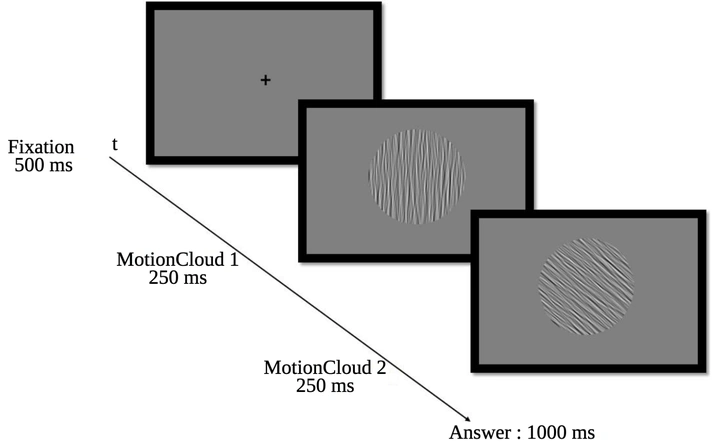
Abstract
The selectivity of the visual system to oriented patterns is very well documented in a wide range of species, especially in mammals. In particular, neurons of the primary visual cortex are anatomically grouped by their preference to a given oriented visual stimulus. Interactions between such groups of neurons have been successfully modeled using recurrently-connected network of spiking neurons, so called "ring models". Nonetheless, this selectivity is most often studied with crystal-like patterns such as gratings. Here, we studied the ability of human observers to discriminate texture-like patterns for which we could quantitatively tune the precision of their oriented content and we propose a generic model to explain such results. The first contribution shows that the discrimination threshold as a function of the precision did not vary smoothly as would be expected, but more in a binary, "all or none" fashion. Our second contribution is to propose a novel model of orientation selectivity that is based on deep-learning techniques, which performance we evaluated in the same task. This model has human-like performance in term of accuracy and exhibits qualitatively similar psychophysical curves. One hypothesis that such a structure allows for the system to be robust to noise in its visual inputs.
- poster présenté au GDR vision, Paris.
- program : https://gdrvision2018.sciencesconf.org/data/pages/posters_GDRVision2018.pdf
- Poster (pdf)
- code : https://github.com/hugoladret/InternshipM1